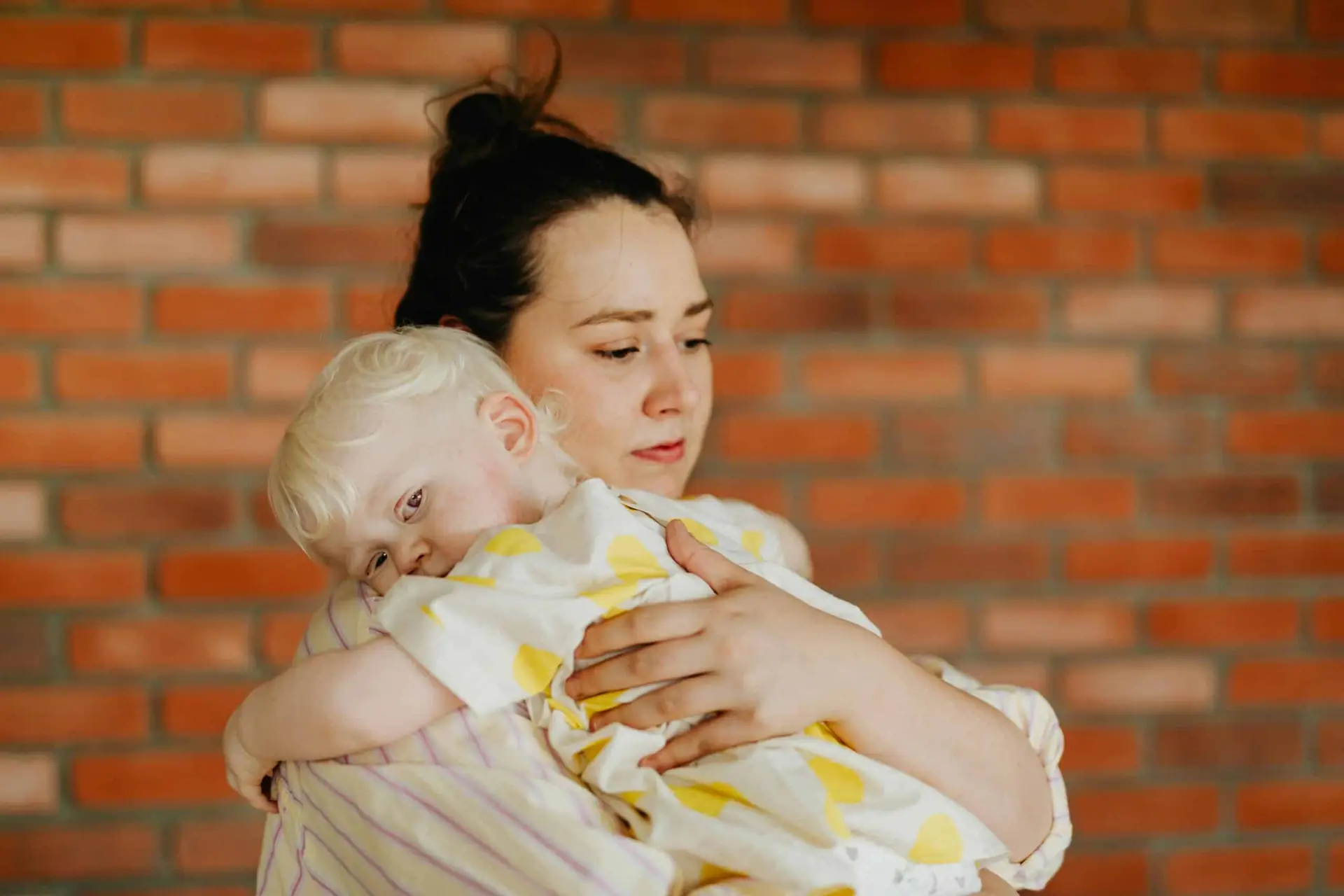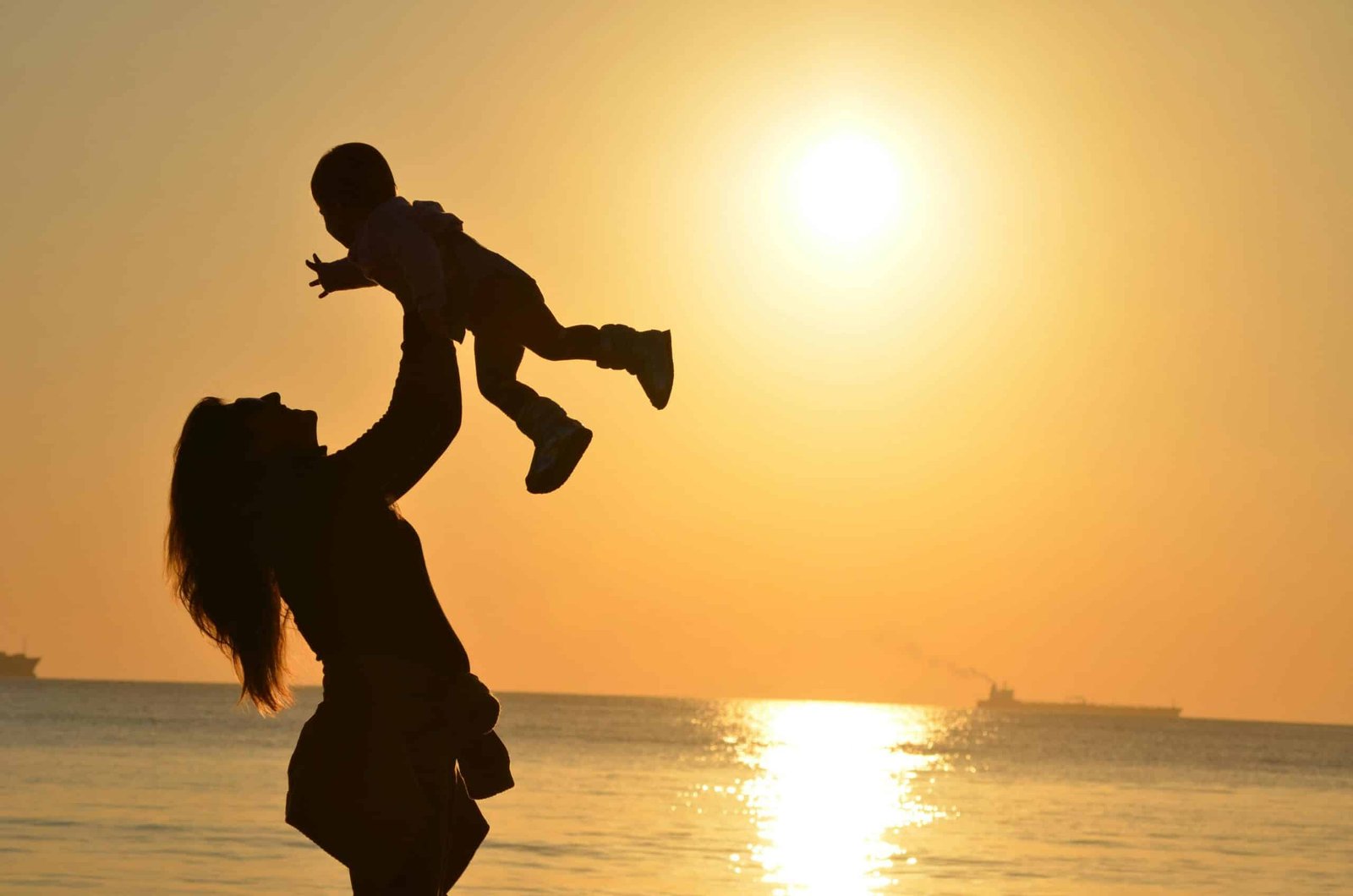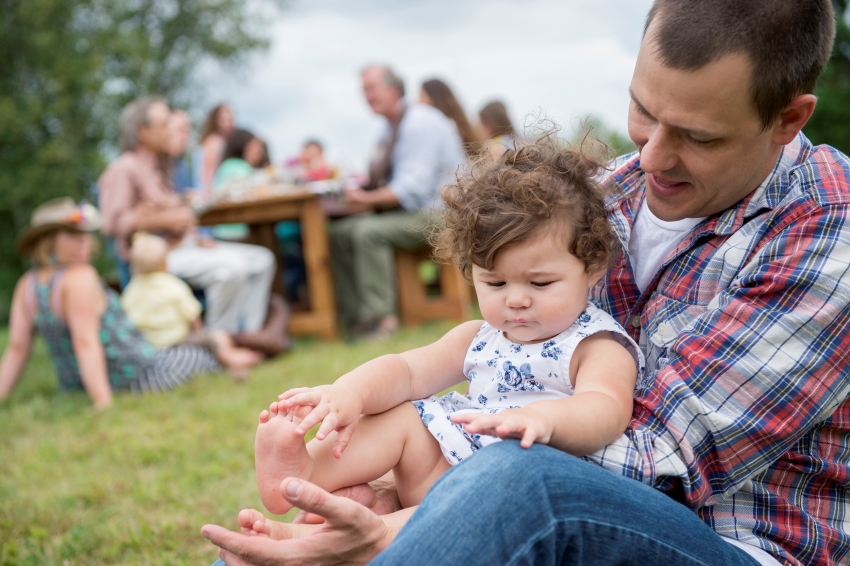Key takeaways for caregivers
- Appreciate busy babies: Through their grabbing, swinging, walking, jumping, babbling, and cooing, babies learn about the world around them and their own place in it. Caregivers should take a moment to watch as their babies gather information and figure it all out. Babies are always learning.
- Join in on babies’ exuberant behaviors: Caregivers should sit with their babies as they play or move with them as the babies explore new spaces. As adults join in, they can find opportunities to support their babies’ learning by talking about what baby is doing, where they are going, and how they got there. When babies talk to their caregivers – or coo or babble or wave – adults should talk right back. Babies may not use words, but they are learning a lot about what it means to communicate.
- Structure an environment for learning: Caregivers should provide babies with a range of objects and spaces to explore while keeping safety in mind. Adults need to keep small objects that could be a choking hazard away from babies and remain vigilant as babies explore high places. They should also try to structure days and spaces around predictable routines to support their babies’ learning.
Babies’ natural curriculum
Babies are busy. From the moment they open their eyes in the morning, most babies are kicking, scooting, crawling, jumping, grabbing, mouthing, banging, crying, laughing, cooing, babbling, and so on. In a single day, babies interact with dozens of objects, take thousands of steps, and produce hundreds of vocalizations.
Caregivers should not misinterpret babies’ actions as misbehavior or inattention, but as part of learning.
In our recent article, we explained that this whirl of activity creates an ideal curriculum for learning how to use objects, walk, and talk. Drawing on our own and colleagues’ published research across cultures and communities, we summarize how babies – children under the age of three – learn about all three topics (i.e., how to use objects, walk, and talk) from three sources: (1) themselves, (2) the people around them, and (3) their environment.
Babies learn from themselves
Babies learn as they interact with objects around them, move through spaces and rooms, and produce sounds.
Exploring how to use objects
When babies bang a rattle on the ground, they learn that the rattle makes noise, that different noises are made when they bang the rattle on tile versus on carpet, and critically, that they control these effects. Each object in their environment offers unique lessons, so babies need a lot of practice interacting with those objects in a variety of ways to learn the objects’ functions: Before babies learn how to use objects as designed – for example, zipping, twisting, stirring – they engage in a lot of exploration in the form of banging, mouthing, and even throwing. Therefore, caregivers should not interpret babies’ actions as misbehavior or inattention, but as part of learning.
Practicing body movements
When babies scoot, then crawl, then cruise, then take steps, they learn how to support and balance their weight by adjusting their ever-changing bodies to accommodate their environment. Babies learn to adapt their movements on different surfaces – such as wood, carpet, grass, and even puddles. They learn to climb up hills and get down from couches. As babies begin to run, jump, skip, and move in other ways, their knowledge about themselves and their environment grows.

Photo by Adrie Molco on Pexels
Caregivers need to recognize that endlessly moving babies are practicing the motor skills needed to effectively interact with their environment – in essence, they are engaged in baby workouts! Of course, babies’ never-ending motivation to try new things and use their bodies in new ways means that one- to two-year olds are prone to injuries, so adults need to be sure to create a safe environment. Because new walkers will plunge down steps, gates or vigilant monitoring are essential.
Testing their vocal instruments
When babies babble, they learn how to move their tongue, lips, and mouth to create different sounds. As babies hear their own vocalizations, they refine their mouth movements and practice sounds that eventually will be combined into words.
Each “ba ba ba,” shriek, or playful “raspberry” teaches infants how to make sounds and communicate with others. Therefore, caregivers need to recognize that all these noises pave the way to future conversations and embrace the joy of watching babies figure out how to communicate.
Babies learn from people around them
Babies learn as parents and caregivers respond to their exuberant play, movements, and vocalizations.
Exploring objects together
When caregivers join in on babies’ interactions with objects – by talking, pointing, and engaging with their babies – they support learning. Babies learn words when caregivers talk about what babies are doing. For example, saying “red wagon” as baby pulls a wagon helps babies learn these words.
Joining in on babies’ play with objects also encourages babies to sustain their play for longer amounts of time and to engage in more complex play. A baby who is alone may bang a block on the ground, but with a caregiver, the baby may attempt to stack it or fit it into a shape sorter. As babies explore the objects around them, caregivers should join in by talking about the objects of their babies’ attention and playing along.
Making babies’ movements into a partner dance
When caregivers join in on babies’ big body movements – by talking and repositioning their own bodies – they help their babies learn about actions. Moving their own bodies in coordination with their babies’ creates proximity. Proximity allows for more learning moments because it is easier for caregivers to talk to and interact with their babies when they are nearby.
When caregivers join in on babies’ interactions with objects – by talking, pointing, and engaging with their babies – they support learning.
Describing babies’ behavior – such as saying “jump jump” as baby jumps – helps babies learn the words for their actions. As babies move around, caregivers should move with them to create proximity and talk about what they are doing. Adults can also support their babies’ safety by supporting their developing motor skills, for example, by teaching baby to back down off the couch.
Building babies’ vocalizations into a duet
When caregivers join in on babies’ babbles and words – by verbally responding – they teach their babies that vocalizations are a way to communicate. Repeating a baby’s babbles may seem silly, but an adult’s babble contains sounds that more closely approximate the sounds that comprise words. As babies hear a more refined version of their own babble repeated back to them, they modify their babbles to become closer to the sounds of real speech.
Responding to babies’ early communications also helps babies understand how communication works: “I say something, then you say something in return.” This may seem rudimentary, but turn-taking is fundamental to effective communication.
As babies go from cooing to babbling to using words, the responses of their caregivers will change from repeating babies’ vocalizations and offering words to building on the words babies say to expand their knowledge. So even before babies use words, adults can start a conversation by responding in turn.
Babies learn from their environment
Babies learn about the objects, spaces, and routines of everyday life as they navigate their environments. Caregivers can help create environments filled with opportunities for learning.
Make a variety of objects available to babies
Balls provide opportunities to throw and bounce. Blocks allow for stacking and building. And dolls give babies the chance to snuggle and change diapers. But babies do not need toys to play. They can shake bottles, fit lids onto pots, pick flowers, and stack rocks.

Photo by Photo By: Kaboompics.com on Pexels
Caregivers should allow their babies to interact with a variety of safe objects – from pots and pans to books and toys – so they can learn to use the wide variety of objects in their environment. As babies learn to use objects as they were designed (figuring out, for example, that shoes go on feet, a spoon is used for eating, or a box can be opened and closed), caregivers should provide their babies a safe time and space to explore these objects and join in the exploration.
Expose babies to a variety of spaces
The spaces available to babies offer opportunities to learn about how to effectively move around. Couches and stairs allow for climbing, slopes and slides provide opportunities for descending, and walls and trees give space for navigation. Similarly, moving on tile, concrete, grass, and carpet provides babies with opportunities to adapt their movements to different surfaces.
Playgrounds provide rich opportunities for babies to practice moving on a variety of surfaces and in a variety of ways.
Caregivers should allow their babies to explore a variety of safe places, including outdoors. Playgrounds provide rich opportunities for babies to practice moving on a variety of surfaces and in a variety of ways. Of course, adults need to be mindful of babies’ motor abilities and the demands of the play space, and monitor accordingly. Babies are not aware of what their bodies can and cannot do, especially as they learn new motor skills.
Use daily routines to support language learning
The different spaces of home are where babies engage in their everyday routines – such as mealtime in the kitchen and story time in the bedroom. Thus, the routines of daily life provide predictability for babies in ways that support learning words.
As babies eat lunch in the kitchen, they are exposed to the names of foods and utensils. As they get dressed in the bathroom, they are exposed to the names of body parts and clothing. And as they play and read books in their bedroom, they hear the names of animals, vehicles, colors, and more.

Photo by Andrea Piacquadio on Pexels
Caregivers can capitalize on these routines by naming the objects that are a part of daily activities with their babies instead of using too many pronouns. For example, when helping an infant dress, instead of saying “Put it on,” the adult might say, “Put the sock on your foot.” Similarly, at lunchtime, instead of telling a baby to “eat them,” the caregiver might say, “Eat the peas.” Such language-rich responses help babies understand and learn.
Babies learn from their own exuberant activity, so caregivers do not have to be involved every minute. They should allow their babies the freedom to explore and make mistakes while also structuring the environment to facilitate safe exploration.
The post Busy bodies, busy minds appeared first on Child and Family Blog.











